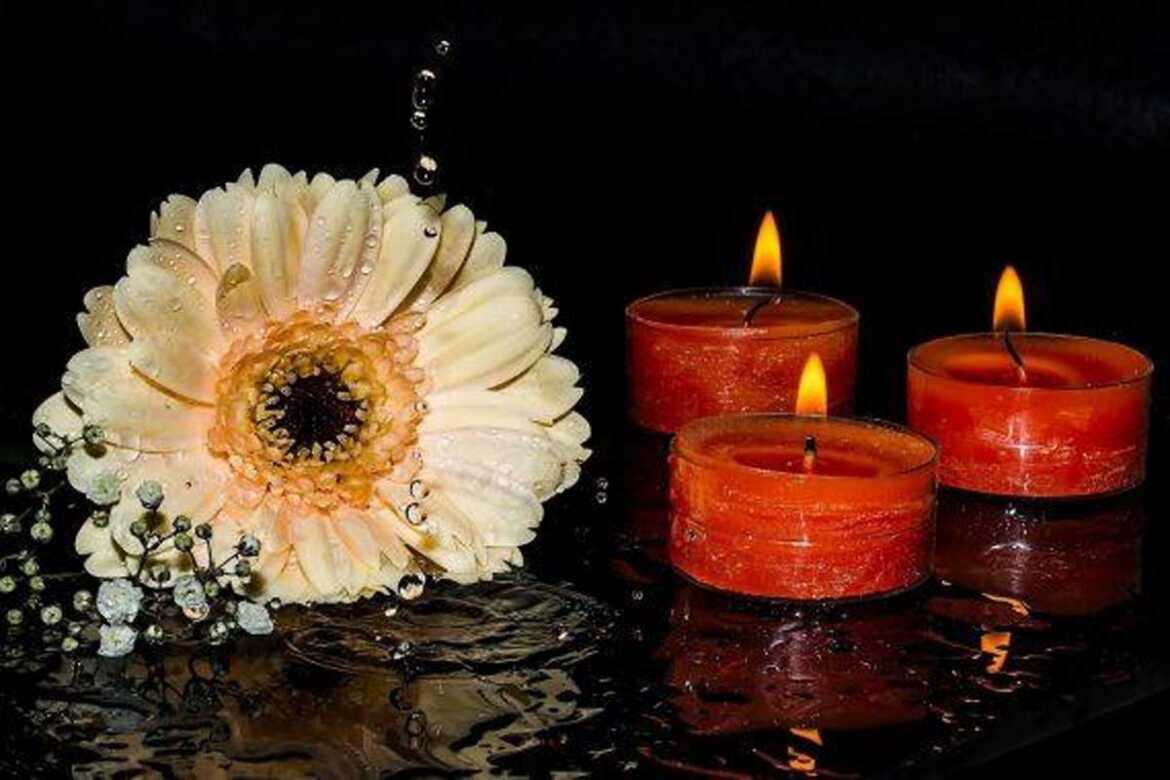Jocelyne LeBlanc October 22, 2020
According to ancient Tibetan medical texts, those living at that time seemingly knew quite a bit about epidemics. And interestingly enough, the epidemics described in the ancient texts were eerily similar to the coronavirus outbreak that the world is experiencing right now.
The medical texts, which are called Gyud-Zhi, detailed medicinal practices in Tibet and the Himalayan regions around 2,500 years ago. They described the epidemics by using the reference “nyen-rim”.
According to the texts, people become increasingly greedy by displaying bad behaviors, selfishness, misuse of spiritual powers, wars, religious fighting, and using chemicals to destroy the lives of humans, animals and insects. These behaviors disrupt the maras (spirits) as well as the Dakinis (gods and goddesses) which ultimately causes the epidemic to spread among humans by breathing and then turns into a pandemic.
 Severe changes in the seasons, misfortune, disruptions to one’s emotional and/or physical well-being, fear, panic, and anger, as well as eating more junk and other foods that are not good for our overall health are all additional effects that could happen.
Severe changes in the seasons, misfortune, disruptions to one’s emotional and/or physical well-being, fear, panic, and anger, as well as eating more junk and other foods that are not good for our overall health are all additional effects that could happen.
Those who caught the nyen-rim (or epidemic) would have experienced lung infections, difficulty breathing, coughing, stomach pains, fever, sweats, weakness, dark pimples, and dysentery (an intestinal infection that causes bloody diarrhea).
The ancient texts revealed that the virus is blunt, enters through the skin into the muscle tissue, then the circulatory channels, deep into the bones, and finally into the organs. Interestingly, COVID-19 is also round with blunt extensions. The virus, which was named “tre tre ho” entered the body through a person’s eyes, nose, mouth, ears, anal, and urethra areas, with the nose and mouth areas being the most susceptible which meant that people had to wear masks. They described it as being invisible, that it moved like lightning, and that it was composed of wind and fire elements.
 In order for those infected to have gotten rid of the virus, they would have taken some herbs in the form of pills, powder, decoctions, tonics, pastes, and medicinal beers. Additionally, they would have worn blessed amulets with herbs inside of them around their neck in order to help them recover from the virus or to prevent them from getting it.
In order for those infected to have gotten rid of the virus, they would have taken some herbs in the form of pills, powder, decoctions, tonics, pastes, and medicinal beers. Additionally, they would have worn blessed amulets with herbs inside of them around their neck in order to help them recover from the virus or to prevent them from getting it.
They also chanted mantras in order to keep their mind relaxed so that they wouldn’t develop anxiety and/or depression as that caused the virus to spread even quicker. “If a problem can be solved, don’t worry; if a problem can’t be solved, don’t worry. Worry will not solve any problem,” stated an 8th century Buddhist monk named Shantideva. As of today, the COVID-19 pandemic has infected over 40 million people worldwide with more than 1.1 million deaths. Mysterious Universe
Halloween: It’s That Time of Year Again
Nick Redfern October 21, 2020
The hungry ghost phenomenon is predominantly an entity that had its origins in the religions and lore of India and Japan. It does, however, have its western equivalent. This particular hungry ghost surfaces from its dark lair on what is without doubt the spookiest night of the year. And, what night might that be? Halloween, of course. For us, today, in the 21st century, Halloween is just a bit of fun and excitement on October 31. Kids dress up as zombies, as ghosts, as ghouls and as monsters. Costume parties are held. Pumpkins are bought in their millions. The words “trick or treat?” echo around much of the planet. And a good time is had by one and all. Few people, though, have an understanding of why we celebrate Halloween in the fashion which we do. You may be surprised to learn that the festival has at its heart the hungry ghost phenomenon. Yes, really. Halloween, the name, is taken from a term coined way back in the 1500s, that of All Hallows Eve. It is also linked to what is called All Saints Day, which is celebrated on November 1 – just twenty-four hours after Halloween. Both Halloween and All Hallows Eve have much older origins that can be found in ancient Gaelic and Pagan rites and rituals. They extend back to at least the tenth century. Collectively, those rites and rituals were known as the Samhain. It was on the night of the Samhain, the ancients believed, that the dead – or, perhaps, the undead – would walk the planet. And, they would come knocking on the doors of the people who so deeply feared the very things that would manifest in our realm on the night of October 31.

While some of the spectral visitors were friendly, others most definitely were not. As a result, Samhain was all about trying to appease the dead, to honor them, and respect them. And not to incur their terrible wrath. While Samhain lore states that the dead were unable to physically eat food, those same spooks were invited to sit in on the immense banquets that were prepared for October 31. If nothing else, the hope was that the spirits would see the invite as something positive and symbolic and that the dead would not rise up against the living. That is why, today, kids all over the world ask that same, universal question: “Trick or treat?” It basically means: “Will you give me food or will you a pay a terrible price?” On the night of Samhain, and if it was suspected that particularly hostile spirits were wandering the landscape, people would disguise themselves as the very monsters that they were so frightened of. In other words, it was an ingenious form of camouflage. This old tradition, too, has become inextricably incorporated into Halloween. It’s precisely why kids are encouraged to dress as skeletons, as zombies, and as demons: whether they know it or not, they are continuing a ritual which dates back centuries and which is designed to appease, and hide from, the hungry ghosts that would surfaced on Samhain.
Even Halloween’’s famous Jack-O-Lantern has its origins in paranormal food and the world of the supernatural. In Ireland there is an ancient tradition of a legendary character named only as Stingy Jack, a man who spent most of his life as drunk as a skunk. On one occasion, Jack got the best of none other than the Devil himself: he manipulated the overlord of Hell to climb an apple tree and get him a tasty apple to eat. Not realizing that there was cunning deceit at work, the Devil saw no problem in doing that. While the Devil was climbing the tree, however, Jack carved the sign of the cross into the trunk of the tree – which prevented the Devil from coming down. Jack then demanded that the Devil would agree to never take his soul. The horned and fork-tailed one was outraged. Reluctantly, though, the Devil had no choice: if Jack didn’t obliterate the cross from the tree, the Devil would be stuck up in the tree forever. Against all the odds, Jack had achieved something incredible: he had trumped the Devil.
 When, as an old man, Jack finally died, he was denied entry to Heaven because of his drunken ways. And, the Devil wanted nothing to do with him either – he had not forgotten that long-gone day when Jack had bested him. At the time that Jack was face to face with the ruler of Hell, he was eating a turnip. Filled with rage, the Devil hurled a hot coal at Jack – which he caught – just as Jack was about to return to our reality, in the form of a ghost. Given that both Heaven and Hell were off-limits to Jack, he decided to walk the landscape by night, seeking – but never, ever finding – a final resting place on Earth. And, how did Jack negotiate the land by night, when the skies were dark? He placed the Devil’s glowing coal into the turnip and used it as a torch to illuminate his way. And, that’s why, today, we have the tradition of placing a candle, or a light, in a pumpkin. And, of course, on the matter of parasites, we should not forget that Jack is part and parcel of the “Trick or Treat?” phenomenon – the treat being mostly a form of food. Mysterious Universe
When, as an old man, Jack finally died, he was denied entry to Heaven because of his drunken ways. And, the Devil wanted nothing to do with him either – he had not forgotten that long-gone day when Jack had bested him. At the time that Jack was face to face with the ruler of Hell, he was eating a turnip. Filled with rage, the Devil hurled a hot coal at Jack – which he caught – just as Jack was about to return to our reality, in the form of a ghost. Given that both Heaven and Hell were off-limits to Jack, he decided to walk the landscape by night, seeking – but never, ever finding – a final resting place on Earth. And, how did Jack negotiate the land by night, when the skies were dark? He placed the Devil’s glowing coal into the turnip and used it as a torch to illuminate his way. And, that’s why, today, we have the tradition of placing a candle, or a light, in a pumpkin. And, of course, on the matter of parasites, we should not forget that Jack is part and parcel of the “Trick or Treat?” phenomenon – the treat being mostly a form of food. Mysterious Universe
Drawing Of The Virgin Mary Suddenly Reappears 13 Years After Fading Out
Jocelyne LeBlanc October 16, 2020
A beautiful drawing of the Virgin Mary was created in an outdoor parking lot space in the municipality of Guadalupe in the state of Nuevo León, Mexico, back in 2007. It was first drawn during a festival celebration called “Bella Vía”, but since it was created with chalk, the picture was only visible for approximately three weeks.
But just recently, people have noticed that the picture has reappeared on the asphalt – thirteen years after it was originally made. This is very unusual given the fact that cars are continuously driving over the spot in addition to environmental elements, so for the colors in the picture to reappear is quite astonishing and nobody has been able to give a definitive explanation for the phenomenon.
 The image was originally drawn in a parking space in 2007.
The image was originally drawn in a parking space in 2007.
This event happened when municipal workers were watering the area and all of a sudden the picture reappeared. When one of the workers noticed the image, he added more water and the colors became more vibrant. But the fact that it reappeared after so many years remains a mystery as the worker stated, “Mixture has been stirred over this space, it has been re-petted and water has been poured countless times and it had not been visualized.”
Some people have called the reappearance of the Virgin Mary a divine intervention and even a miracle. Since the image inexplicably reappeared, the parking spot has now been blocked off with traffic cones and the drawing is being watered on a continuous basis so that the colors become increasingly visible.
Numerous people have visited the site in recent days to honor the Virgin Mary with flowers and lit candles. Even the original artist (whose name is unknown) who drew the picture visited the location and did in fact confirm that it was the same picture this person created thirteen years ago.

People have been leaving flowers and candles at the site.
Felix Palomo, who is the director of Culture of the municipality of Guadalupe, posted the pictures to his Twitter account with the question, “Whether you believe in miracles or not, the question is how did this image reappear 13 years after its creation?”
While many people believe that this was a divine miracle, others aren’t convinced as one person commented, “The explanation is simple, some mineral pigments react with the acidity of the water. Anyone with a basic education in chemistry should know.”
You can decide for yourself as a picture of the Virgin Mary drawing can be seen here https://www.razon.com.mx/virales/virgen-anunciacion-aparece-charco-nuevo-leon-viraliza-408247. Mysterious Universe
